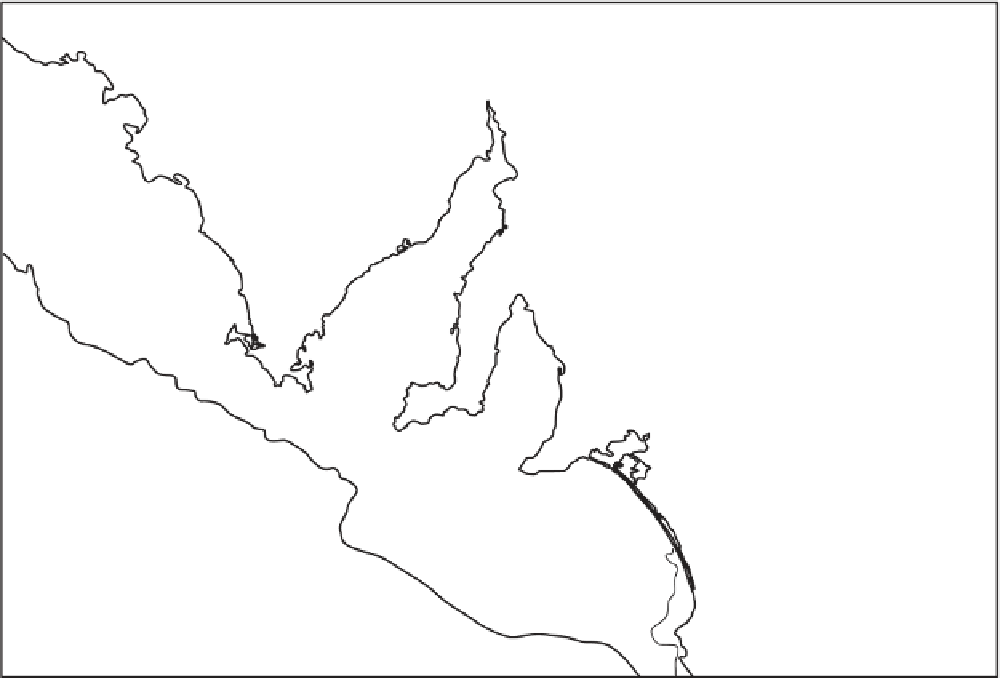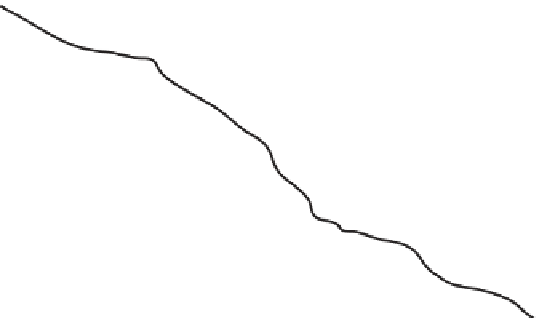Geology Reference
In-Depth Information
1
3
3
°
134
°
135
°
136
°
137
°
138
°
139
°
140
°
141
°
142
°
SOUTH AUSTRALIA
Ceduna
N
Chinamans
Creek (1-3)
Streaky Bay
EYRE
PENINSULA
Whyalla
Streaky
Bay
Cowlers
Landing
AUSTRALIA
Tipparra Reef
Dutton Bay
Elliston
Cape
Hardy
Moonta Bay
N.S.W.
Spencer
Gulf
Ardrossan
Stansbury
Tumby
Bay
Port
Lincoln
Semaphore
100
Torrens
200
1000
Marino Rocks
k
Normanville
Port Moorowie
2000
Kangaroo
Island
West Island
0
100
200
30
Kingston
Cape Jaffa
kilometres
contours in metres
Robe
Fig. 4.
A map of the study area illustrating location of the 20 study sites.
(4-6 m w.d.) and a deep water site (10 m w.d.) every
three months over a 2.5 year period. Each site was
sampled along two transects perpendicular to the
coastline, 30 m in length and 10 m apart using
50
blades and stems for each species further sepa-
rated; (4) organic matter was removed via several
treatments with 10% H
2
O
2
; (5) samples were then
placed in an ultrasonic bath for 3 hours, partly to
remove remaining organic material; (6) the sample
was poured through 3.5 mm and 65
50 cm quadrats, 5 m apart as described in
English
et al
. (1997). All plant matter was removed
with a blade or scissors and placed in a shade cloth
bag. Water samples were collected just above the
quadrat. Collected samples were air dried.
Temperature, salinity and conductivity were
measured, samples were frozen as soon as possible
for nutrient analysis and depth measurements
were made using a dive computer. Climatological
data for two weeks surrounding the sampling dates
were obtained from the Australian Meteorological
Offi ce.
m sieves, and
further epiphytes gently rubbed off and carbonate
retained on a 65
m sieve; (7) this material was
further treated with 35% H
2
O
2
; and (8) the car-
bonate was fi nally air dried and weighed.
Data analysis
Carbonate values have been calculated as the
amount of carbonate per area (m
2
) and per kilo-
gram weight of seagrass. The implications of using
these two methods of calculating carbonate values
are described below.
The amount of carbonate per m
2
is calculated
for each quadrat or plant species using the follow-
ing equation:
Laboratory methods
Samples were analysed using the following pro-
cedure: (1) samples were rinsed in fresh water;
(2) they were then air dried, extraneous material
removed, and subsequently weighed; (3) different
seagrass species were then separated and the
(1)










































































































